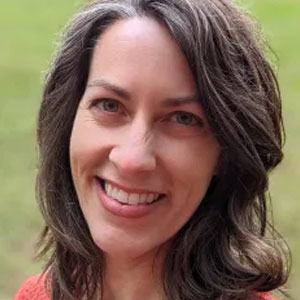New form of omega-3 could prevent visual decline with Alzheimer’s disease
For the first time, researchers have developed a form of the omega-3 fatty acid docosahexaenoic acid (DHA) that is capable of crossing into the eye’s retina to ward off visual declines related to Alzheimer’s disease, diabetes and other disorders.
The DHA found in fish oil capsules and other supplements is typically in a form called triacylglycerol (TAG) DHA. Although TAG-DHA has benefits in other parts of the body, it does not reach the eyes because it cannot travel from the bloodstream into the retina. For the study, researchers created a new lysophospholipid form of DHA, or LPC-DHA. In studies using mice, LPC-DHA successfully increased DHA in the retina and reduced eye problems associated with Alzheimer’s-like processes.

“Dietary LPC-DHA is enormously superior to TAG-DHA in enriching retinal DHA and could be potentially beneficial for various retinopathies in patients,” said Sugasini Dhavamani, a research assistant professor in the Department of Medicine at the University of Illinois at Chicago. “This approach provides a novel therapeutic approach for the prevention or mitigation of retinal dysfunction associated with Alzheimer’s disease and diabetes.”
Dhavamani will present the research at Discover BMB, the annual meeting of the American Society for Biochemistry and Molecular Biology, March 25–28 in Seattle.
In healthy eyes, DHA is concentrated in the retina, where it helps maintain photoreceptors, the cells that convert light into signals that are sent to the brain. DHA deficiency in the retina is associated with vision loss. People with Alzheimer’s disease, as well as those with diabetes, retinitis pigmentosa, age-related macular degeneration and peroxisomal disorders, frequently have abnormally low levels of retinal DHA, and visual impairments are common as a result.
While boosting DHA can help to prevent such declines, increasing retinal DHA content has been challenging with currently available supplements. For a dietary supplement to deliver DHA to the retina, the DHA must be able to first be absorbed from the intestine into the bloodstream and then cross from the bloodstream into the retina.
“Increasing the retinal DHA at clinically feasible doses has not been possible until now because of the specificity of the blood–retinal barrier that is incompatible with the specificity of the intestinal barrier,” said Dhavamani. “This study uses the novel approach of dietary LPC-DHA that overcomes both intestinal and blood–retinal barriers and improves retinal function.”
The researchers tested their LPC-DHA supplement in mice bred to exhibit processes similar to those found in early-onset Alzheimer’s disease. After six months, mice that were fed LPC-DHA daily showed a 96% improvement in retinal DHA content as well as preserved retinal structure and function. In contrast, TAG-DHA supplements had no effect on retinal DHA levels or function.
The results suggest that LPC-DHA supplements could help to prevent Alzheimer’s-related declines in visual function. Researchers say the approach should also be helpful for other disorders in which DHA deficiency and vision impairment are common.
The dosage of LPC-DHA used in the study is equivalent to about 250 to 500 milligrams of omega-3 fatty acids per day in humans. Since these studies were conducted in mice, further studies would be needed to confirm that LPC-DHA is safe and effective for use in humans.
Sugasini Dhavamani will present this research during the spotlight session on chemical biology of natural products, nucleic acids and small molecules from 3:15–4:15 p.m. PDT on Monday, March 27, in Rooms 602–604 of the Seattle Convention Center (abstract). Contact the media team for more information or to obtain a free press pass to attend the meeting.
Enjoy reading ASBMB Today?
Become a member to receive the print edition four times a year and the digital edition monthly.
Learn moreGet the latest from ASBMB Today
Enter your email address, and we’ll send you a weekly email with recent articles, interviews and more.
Latest in Science
Science highlights or most popular articles

Building the blueprint to block HIV
Wesley Sundquist will present his work on the HIV capsid and revolutionary drug, Lenacapavir, at the ASBMB Annual Meeting, March 7–10, in Maryland.

Gut microbes hijack cancer pathway in high-fat diets
Researchers at the Feinstein Institutes for Medical Research found that a high-fat diet increases ammonia-producing bacteria in the gut microbiome of mice, which in turn disrupts TGF-β signaling and promotes colorectal cancer.

Mapping fentanyl’s cellular footprint
Using a new imaging method, researchers at State University of New York at Buffalo traced fentanyl’s effects inside brain immune cells, revealing how the drug alters lipid droplets, pointing to new paths for addiction diagnostics.

Designing life’s building blocks with AI
Tanja Kortemme, a professor at the University of California, San Francisco, will discuss her research using computational biology to engineer proteins at the 2026 ASBMB Annual Meeting.

Cholesterol as a novel biomarker for Fragile X syndrome
Researchers in Quebec identified lower levels of a brain cholesterol metabolite, 24-hydroxycholesterol, in patients with fragile X syndrome, a finding that could provide a simple blood-based biomarker for understanding and managing the condition.

How lipid metabolism shapes sperm development
Researchers at Hokkaido University identify the enzyme behind a key lipid in sperm development. The findings reveal how seminolipids shape sperm formation and may inform future diagnostics and treatments for male infertility.

